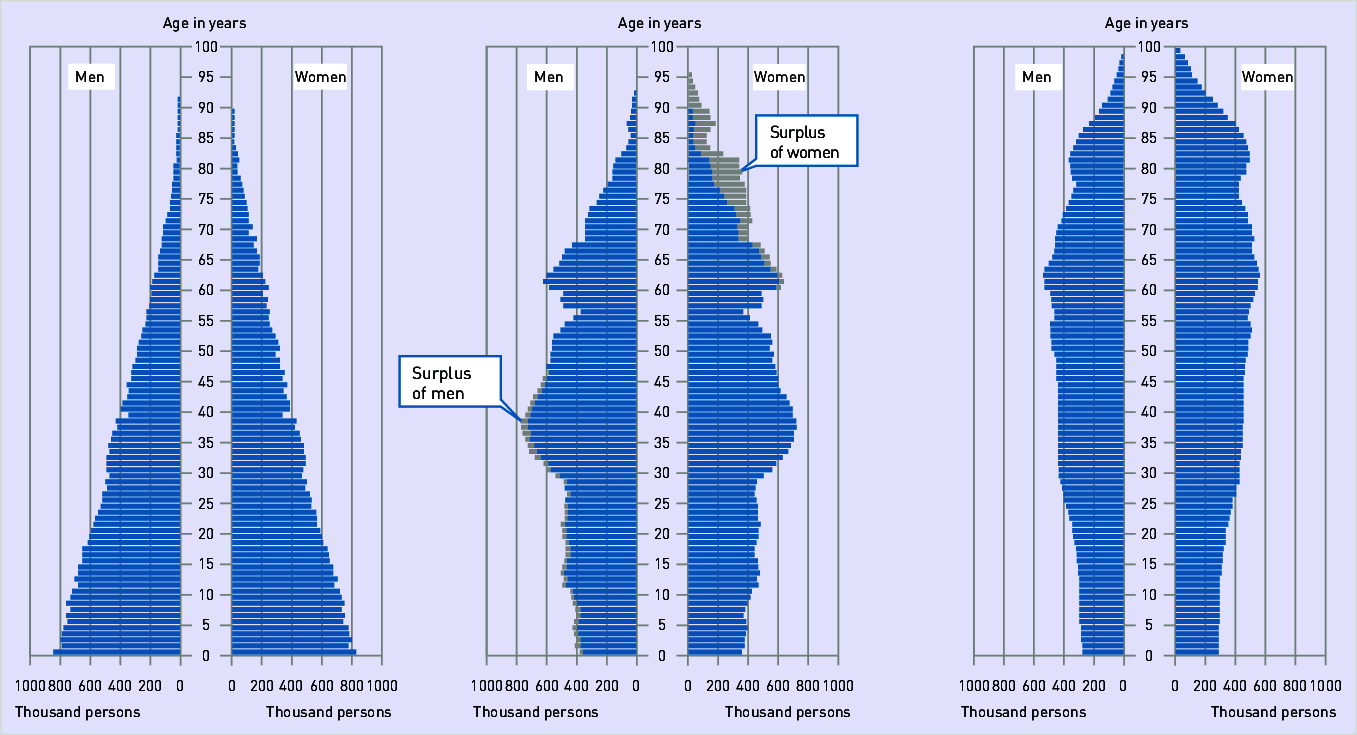
Figure 3.143: Age structure of the German population 1919 (left), around 2001 (middle) and 2050 (right, prognosis)
Postbox 1960
D-59753 Arnsberg

Figure 3.143: Age structure of the German population 1919 (left), around 2001 (middle) and 2050 (right, prognosis)
People reach increasingly higher ages, stay healthy longer – and thus spend more time living in care conditions. While the age structure of Germany in 1919 still displayed the typical pyramid shape with children and young adults forming the strongest age group, 30-45-year-olds represented the strongest age group around 2001. Prognoses for the year 2050 show little differentiation in terms of age structure progression: There are almost identical numbers for old and young people (see figure). And the trend is fundamentally progressing in the same way all over the EU.
According to the 2010 statistical yearbook of the European Union (http://ec.europa.eu/eurostat), the percentage (age quota) of inhabitants aged 65 and older compared to the number of inhabitants between the ages of 15 and 64 will increase dramatically up until 2060. Figure contains corresponding values for the years 2010 and 2060 (prognosis) for a few select EU states (average value EU27). In most EU countries, the age quota of people aged 65 and older will double until 2060, and even quadruple for Poland, in this case most likely due to emigration of younger people.
This development results in a permanently increasing demand for geriatric care and nursing homes, care communities, facilities for communal living, special senior apartments and facilities for assisted living.
The architecture of housing estates for elderly people and those in need of care has also changed. Up until 1960, elderly people were "kept safe" in homes. The design of these facilities was accordingly simple and bland. After that, up until approximately the 1980s, the hospital with its typical layout became the example for elderly care and nursing homes, where people were "treated". Many older facilities still look like this today: There are simple and undecorated shared rooms arranged along extended corridors. There is little colour, and usually just barely sufficient lighting. After 1980, it became more common to create homes for elderly people where comfortable living was to be facilitated, among other things, through personal furniture as well as light and colour. Instead of "safekeeping" or "treatment" of older people, the new idea was to "motivate" and to "activate" them, meaning participating actively in life. The architectural development that started around the year 2000 centres the living community, which is based on the ideal of family, as a place of comfort and the normal process of ageing. Old people live much the same way as they would in a family, and partially support each other as well. One development, for example, were multigenerational houses. The change in architectural room concepts also had consequences in terms of light and colour in such living systems.